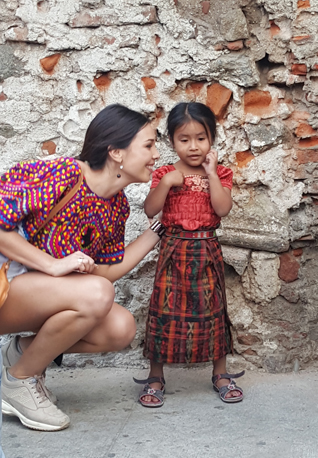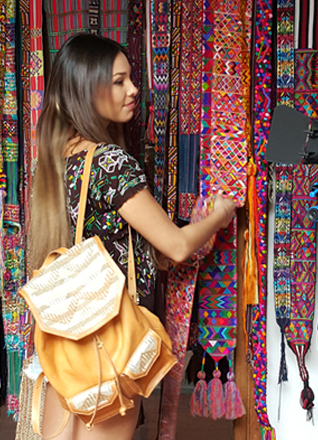Mayan Crafts





Through the unique richness in its textile tradition, which is dynamic and full of color, Guatemala portrays the identity of its people and their millenary culture and represents a tradition that’s inherited from generation to generation. The traditional costumes and fabrics are the maximum expression of the Mayan culture, which for three thousand years, has given life to the art of weaving as a form of communication and, thus, giving us a rich heritage to be discovered.
Through their colors and designs, which have an ancestral meaning, the fabrics are used as a language to express the emotions of the indigenous people. Making use of the waist loom or the foot loom and techniques such as the brocade and embroidery, the fabrics are weaved by indigenous women, who utilize materials like the cotton and agave.
The diversity and quality of the fabric used in the elaboration of traditional costumes shows the textile tradition of more than two millenniums of the Mayan culture. Because each piece is different and completely handmade, the costumes are unique and unrepeatable.
ANDREA INSUA products use eco-friendly fabrics, especially the ones using cotton threads in their original tones such as: green, brown, raw, red, and beige. Some of the threads are dyed with natural dye extracted from avocado, carrot, papaya, tree leaves, seeds, etc.
Main garments of the Mayan costume: The “huipil”, The “corte” and The headband.
The "huipil":
The “huipil” is the most important garment for the Mayan women. Through it, they reflect their true ethnic identity, crucial in reinforcing the sense of belonging within a community and transmitting it from generation to generation. A "huipil" shows which people or community women represent since each “huipil” has its own characteristics depending on the materials, techniques employed in its elaboration, and the way it is worn.
The "corte":
It is a long skirt made by a single piece of fabric. The “corte” is generally weaved by Mayan men using the foot loom.
The "headband":
This accessory is used as head decoration by the indigenous women. It represents the serpent: guardian of the woods and protector of the ancient Mayas. It also represents the hills or the rainbows. Each band is personalized and represents the life of the person to whom it is being weaved for.


